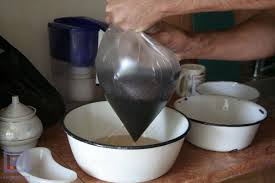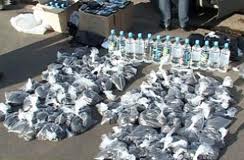What to Expect in 2014? – Digest of Belarus Economy

The year 2013 will probably go into the economic history of Belarus as a year when even the government officials acknowledged that the economy was stagnating, and there were no prospects for any quick economic growth in the years to come.
The official economic forecast for 2014 contains a modest GDP growth number of 3.3% (compared with 8.5% forecast for 2013), the Belarusian ruble will continue to be devalued (the only question now is how quickly) and despite the promises of Russian loans, Belarus faces the possibility of a 2011-like currency crisis.
The economic failures of 2013
2013 will go into the history books as a total failure for the economic authorities of Belarus. The long-run growth potential has weakened, productivity lags behind the rest of the world, its main training partner is also stagnating and the currency reserves are depleting.
Add the potash market scandal, which resulted in low prices and low production to one of the nation's most important governmental enterprises, Belaruskali, and you get a year with a disastrous GDP growth rate of 0.9 per cent. This number is disappointing even those in countries with developed economies.

For a developing economy like Belarus a growth rate of 0.9 per cent means a full-blown recession has set in. This is the second lowest growth rate in the past decade – only once has this number been lower only in 2009, when the government had the excuse of the Great Recession.
Moreover, manufacturing and agriculture in 2013 were declining, loosing 4.8 and 4.0 per cent respectively in comparison to the previous year. Only retail trade, which continued to benefit from wage increases, promoted growth.
The economy also failed to perform as expected by the government on other accounts. Inflation exceeded the forecasted value and reached 18.3 per cent over 2013. Devaluation also escalated faster than expected. Because of the stagnation in Russia and the potash conflict the balance of trade in goods also quickly deteriorated to -$4.72bn over January-November 2013.
The only economic indicator, which met its projected target was the growth in real wages. Real wages grew 17 per cent in January-November, while labour productivity grew only 2.2 per cent in 2013. The pressure on wages comes from migration: Belarusians now can freely migrate to Russia, where wages significantly exceed Belarusian levels.
GDP outlook for 2014
Little hope remains that retail trade, the main growth driver in 2013, will keep up with the fantastic growth rate of 18.2 per cent in 2014. However, manufacturing will pick up pace, mostly due to gradual devaluation, which makes Belarusian exports more competitive. Other positive factors might be the resolution of the potash conflict and the increase of the oil supplies from Russia.
The effect of last year’s modernization programme remains to be seen. So far the press is keeping quiet about success stories, but there are multiple anecdotes about failures (for example, about a linen plant buying equipment which appears too big for its buildings, or several scandals within the wood industry). The government officials understand the issues and talk about how the key to modernization lies not in more investment, but in better management. However, nobody knows how to motivate the management of state enterprises.
The growth of real wages will slow down in 2014. High wages undermine the competitiveness of Belarusian exports. Most of the state-owned enterprises have limited capacities to increase wages any more as they are already in the red. Already in November 2013 real wages declined. In 2014 one can expect that wages will grow slower than the economy.
Given all these facts, even the government projects the modest 3.3 per cent growth for 2014 (compared to 8.5 per cent forecast for 2013), while independent experts are more conservative and give forecasts of 1.5-2.5 per cent.
Current account and devaluation expectations in 2014
Devaluation will remain the burning question throughout 2014. Over 2013 the Belarusian ruble was devalued from BYR 8.570 to BYR 9.510 per $1, and there is no reason for it to stop at the current level (at the time of writing the rate is already up to 9.590).
Current account balance will stay negative in 2014, even if the exports are expected to pick up slightly. The Russian $2bn loan (part of which is, in fact, just a replacement for the last tranche from the Anti-Crisis Fund of Eurasian Union) will help the monetary authorities keep the exchange rate from plummeting uncontrollably. But to keep the exchange rate stable the government requires much more. On the other hand, the real economy desperately needs devaluation to restore its external competitiveness.
Political pressure remains an important factor against devaluation – Lukashenka promised a certain fixed wage in USD during his election campaign (although $1,000 average wage in 2015 already seems unattainable). This factor will motivate the National Bank to use non-conventional measures like liquidity constraints and restrictions on foreign currency-denominated loans.
Given the desperate need for inflows of foreign currency, privatisation seems imminent. The list of the major candidates for privatisation includes oil refineries, auto truck producer MAZ, cell company MTS and even some producers of military hardware.
The projected buyers are Russian corporations. Combined with Russian loans, and, maybe, some Chinese investments, the government will be able to partially cover the nation's trade deficits. But in 2014 Belarus also has to repay a number of loans. Continuing gradual devaluation of the currency seems inevitable. The expert's consensus is that BYR10.500-11.000 per $1 by the end of 2014. However, there remains the possibility of another currency crisis with a devaluation-inflation spiral similar to that of 2011.
2014 is going to be another difficult year for the Belarusian economy. The authorities remain on the horns of the dilemma, torn between the need for macroeconomic stability (in particular, stability on the currency market) and the desire to stimulate the economy. Let us hope that difficulties will open way to the long-needed structural reforms.
Kateryna Bornukova, BEROC
This article is a part of joint project between Belarus Digest and Belarusian Economic Research and Outreach Center (BEROC).





